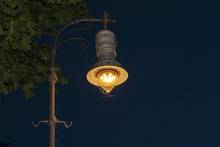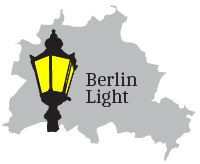The pros and cons of Berlin's gaslight

Gaslaterne mit Ziermast, Foto: Bertold Kujath
Berlin is home to approx. 40,000 or half the world's functioning gaslights. Additionally, the area Frohnau in the district of Reinickendorf contains the world's largest compact gas lit area. The diverse historical gas lamp types help form the cityscape and accentuate Berlin's architecture. Throughout its history, much of gaslight's technology has been developed in Berlin: e.g. gasometers, pipe systems, special lampposts, lamps and the light-producing mantles in them as well as today's solar-powered sensors mounted on top-piece lights.
Therefore, the association Denk mal an Berlin e.V. presented Berlin's gas street lighting as an 'Exceptional Monument' on 24 November 2011. The association 's campaign highlighted the great public and professional interest in the conservation of this unique technological monument.
In the following months, many campaigns and excellent regional and supra-regional press articles won a large number of supporters for gas street light. The opposition to the demolition of Berlin's gas lamps has grown.
In this section we present the pros and cons of the Berlin gaslight debate.




 Hängeleuchte
Hängeleuchte Reihenleuchte
Reihenleuchte
